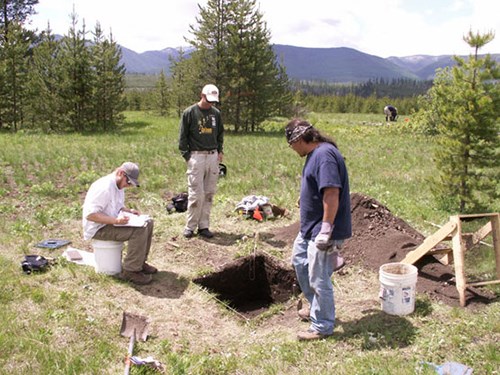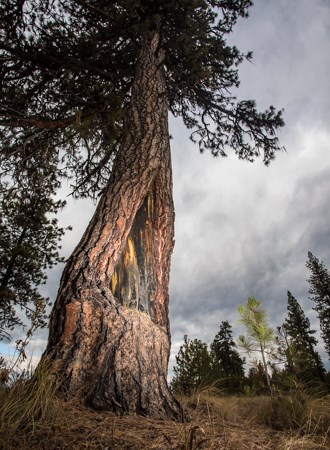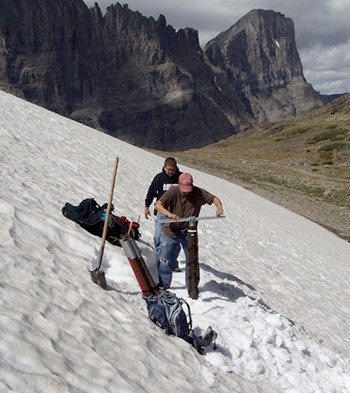
NPS Glacier National Park is world renowned for its natural beauty and endless recreational opportunities. Overwhelmed by its spectacular wild vistas, many of us fail to consider those who came before us, past peoples who perhaps admired the same views or whose footsteps created the path we now follow. If we take a minute to ponder that we are not the first people to know and love this land, we begin to wonder what other people lived here in this sometimes harsh but glorious landscape. What brought them to this vast mountainous area? How did they travel? What did they eat? Archeologists try to answer these and other questions by studying the things that early people left behind. Often, when we think of the process of archeological inquiry, we imagine scientists collecting arrowheads or performing elaborate excavations. Archeology involves studying a wide range of objects (artifacts), structures (features), and places that people live (cultural landscapes). Studying these pieces of physical history helps us to connect to people and landscapes from the past. From the smallest flake of chert to a abandoned homesteader's cabin, from an ancient trail to a sunken steam boat, archeologists painstakingly work to unravel Glacier National Park's history and prehistory. They incorporate techniques such as careful excavation and systematic walking surveys, and utilize technological tools such as GPS units, metal detectors, and ground penetrating radar. They also seek the knowledge of tribal members who have memories and stories of this place—part of their traditional lands—and still seek out its special places; or the descendants of more recent inhabitants like the miners, homesteaders, and early park employees. Through the study of archeology and ethnography, people of long ago can still talk to us today. Read about the National Park Service Archeology Program. Recent Projects at GlacierGlacier's archeologists are involved in many projects throughout the year. By studying prehistoric and historic places and objects, we hope to add to our knowledge of this place we now call Glacier National Park. Read about cultural resources discovered in the burn area after 2015's Reynolds Creek Fire in the article Fire-Fueled Finds. 
NPS Photo Culturally Modified Tree StudyIn 2017, Glacier National Park archeologists teamed up with Montana Conservation Corps (MCC) members from the Blackfeet Youth Corps and the Veterans Corps to survey and record culturally modified trees in the North Fork. The project involved systematically surveying thousands of acres of off-trail woodland by foot over the course of several weeks. As a result, park archeologists and MCC volunteers recorded over twenty new culturally modified trees. Read about culturally modified trees and this survey project. 
Ice Patch Archeology and Paleoecology Project Ice Patch ArcheologyA very exciting project began at Glacier in 2009, in partnership with members of the Confederated Salish and Kootenai Tribes of the Flathead Reservation, the Blackfeet Nation, the University of Wyoming, the University of Colorado Boulder, and the University of Arizona as well as the Rocky Mountains Cooperative Ecosystem Studies Unit (CESU). As the park's perennial ice patches melt, they are releasing paleobiological materials, like wood and bones, long trapped in the ice. Researchers collected material and drilled ice core samples. Read more on the Glacier Ice Patch Archeology and Paleoecology Project website or Crown of the Continent Research Learning Center's Ice Patch Resource Brief. Teaching ArcheologyArcheology for Kids Glacier Ice Patch Project: The Kid's Pages |
Last updated: November 9, 2018
